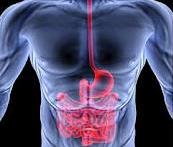 An increasingly common cause of tummy troubles, fructose malabsorption, affects one in three people and many don’t even know they have it. Symptoms are similar to IBS and include bloating, diarrhea and/or constipation, flatulence, stomach pain, and even vomiting if large quantities are consumed.
An increasingly common cause of tummy troubles, fructose malabsorption, affects one in three people and many don’t even know they have it. Symptoms are similar to IBS and include bloating, diarrhea and/or constipation, flatulence, stomach pain, and even vomiting if large quantities are consumed.
What happens in fructose malabsorption is that their are problems within the small intestine which impairs the absorption of fructose into the bloodstream. As a result, there is an increased concentration of fructose in the entire intestine. When this excess fructose is dumped onto the intestines, there occurs rapid bacterial fermentation, altered gastrointestinal motility, the formation of mucosal biofilm and altered profile of bacteria. What this basically means is that digestion will be heavily impaired; bacteria ferments, excess gas is produced, the movement of the intestines needed to break up food is reduced, excess mucous is produced, and the “good” bacteria that is present in your digestive tract to break down food is altered. All these things mean you will experience the symptoms listed above, some people quite severely. In addition, some effects of fructose malabsorption are decreased tryptophan, folic acid and zinc in the blood, which can cause separate issues altogether within the body.
How Do I Know I Have It?
The diagnostic test to determine fructose malabsorption is called a hydrogen breath test and is the method currently used for a clinical diagnosis.
How Do I Treat It?
There is no known “cure” as such, but restricting dietary intake of free fructose and/or fructans usually provides relief in a high proportion of patients. By limiting the amount of fructose consumed, you are lowering the amount of fructose which will end up fermenting in the intestines and resulting in numerous digestive problems.
It’s important to note that glucose enhances the absorption of fructose into the bloodstream, so it’s crucial to avoid foods high in fructose but low in glucose. For example, white potatoes are readily absorbed because they have more glucose than fructose, whereas foods with fructose-to-glucose ratio >1, like apples and pears, are often problematic regardless of the total amount of fructose in the food.
Unfavourable Foods (more fructose than glucose)
- Foods rich in fructans and other sugar saccharides such as artichokes, asparagus, leeks, onions and wheat-containing products including breads, cakes, biscuits, breakfast cereals, pies, pastas, pizzas and wheat noodles.
- Foods containing sorbitol, present in some diet drinks and foods, and occurring naturally in some stone fruits (apricot, nectarine, peach, plum), and other ingredients that end with -tol, commonly added as artificial sweeteners in commercial foods.
- Fruit — apple, pear, guava, honeydew melon, nashi fruit, pawpaw, papaya, quince, star fruit, watermelon
- Dried fruit — apple, currant, date, fig, pear, raisin, sultana
- Fortified wines
- Foods containing added sugars, such as agave nectar, some corn syrups, and fruit juice concentrates.
What Else Can I Do?
Another effective treatment option is acupuncture. In adults there are certain points that can strengthen the small intestine which can regulate fructose uptake. In children, the abdomen can be treated which supports a child’s digestive function and reduces the effect of fructose on their systems.
To summarize, there is no cure for the fructose malabsorption but it can be managed by acupuncture and limiting the amount of fructose and fructans in the diet. Food to be avoided include apples, honey, grapes, watermelon, garlic, apples, wheat and onions. And once you start looking, you quickly realize there are onions, often as powder, in an extraordinary amount of processed foods.
To find out more, you can listen to a recent fructose interview on the ABC here.

